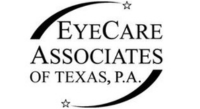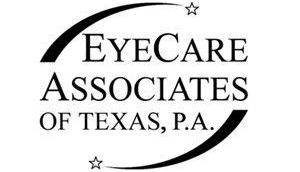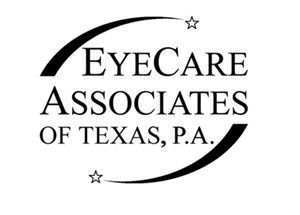Article
The Role of Family History in Cataract Development: Are You at Risk?
The eye's lens directs light onto the retina, providing clear vision. Over time, proteins in the lens can clump together, leading to clouding that obstructs light passage, resulting in blurred vision and glare, causing cataracts. They progress slowly, making regular eye examinations essential for early detection and management.
June is cataract awareness month, the perfect time to start understanding the interplay between genetic predisposition and other risk factors is crucial for proactive eye health management.
The Role of Genetics in Cataract Development
A family history of cataracts can increase your chances of getting the condition. Specific genetic mutations affecting lens proteins may lead to cataracts forming earlier or increasing susceptibility.
The Genetic Link to Cataracts
Studies have identified multiple genes associated with cataract formation. Mutations in genes responsible for lens structure and clarity, such as CRYAA, CRYAB, GJA8, and HSF4, can cause protein misfolding, oxidative stress, and cellular damage, all of which contribute to cataract development.
These genetic variations may cause cataracts to appear at an earlier age, especially in congenital and early-onset cases. Mutations in genes like MAF and PITX3 can lead to lens abnormalities present at birth.
Types of Inherited Cataracts
Family history can significantly influence the development of cataracts, with certain types being directly linked to genetic inheritance. These inherited cataracts vary in onset, severity, and association with other health conditions.
Congenital Cataracts
These cataracts develop in the womb or within the first year of life. They can affect one eye (unilateral) or both eyes (bilateral) and vary in size and severity. Some cases result from genetic mutations, while others stem from infections during pregnancy, metabolic disorders, or chromosomal conditions like Down syndrome. Key features include:
- It may cause blurry or cloudy vision from birth.
- Can lead to amblyopia (lazy eye) if untreated.
- Often requires early surgical intervention to prevent long-term vision impairment.
Juvenile Cataracts
They appear later in childhood or adolescence. They can be inherited through autosomal dominant or recessive patterns, meaning they may be passed down from one or both parents. These cataracts typically progress slowly and may not require surgery unless vision is significantly affected. Causes and risk factors include:
- Mutations in lens-related genes like CRYAA, CRYAB, and GJA8.
- Genetic syndromes affecting eye development.
- Metabolic disorders like Fabry disease.
Presenile Cataracts
This type of cataract develops earlier than age-related cataracts, typically before the age of 50. They may progress faster due to underlying health conditions and require surgery if they severely impact vision. Common causes include:
- Genetic predisposition.
- Diabetes, which leads to faster cataract progression.
- Long-term corticosteroid use.
- Excessive UV exposure or smoking.
Syndromic Cataracts
Some inherited cataracts occur as part of a larger genetic syndrome, affecting not just vision but other aspects of health. These syndromic cataracts often present alongside additional eye abnormalities or systemic conditions. Examples of genetic syndromes with cataracts are:
- Marfan Syndrome: A connective tissue disorder that can cause lens dislocation (ectopia lentis), making cataracts more likely.
- Myotonic Dystrophy: A neuromuscular disorder associated with distinctive "Christmas tree" cataracts, which appear as iridescent, shimmering deposits in the lens.
- Galactosemia: A metabolic disorder where infants cannot properly metabolize galactose, leading to the rapid formation of cataracts if untreated.
The Importance of Family History for Assessing Your Risk
Sharing information about relatives who have had cataracts, particularly those with early onset, can assist eye care professionals in determining your predisposition. If you are concerned about your cataract risk, consider taking the following steps:
Schedule Regular Eye Exams
Comprehensive eye exams allow doctors to monitor lens clarity and detect cataracts before they worsen. People with a family history of cataracts should schedule annual exams, even if they have no symptoms. Modern diagnostic tools, such as slit-lamp exams and optical coherence tomography (OCT), help detect cataracts at the earliest stages.
Monitor and Manage Health Conditions
If you have diabetes, high blood pressure, or autoimmune disorders, keeping them under control reduces your risk. High blood sugar levels cause protein deposits in the lens, leading to faster clouding, while hypertension affects overall eye health. Work with your doctor to manage these conditions with diet, exercise, and medication.
Assess Your Lifestyle Factors
Smoking and excessive alcohol consumption contribute to oxidative stress, which damages the lens. Prolonged UV exposure without sunglasses accelerates lens degeneration. Wearing UV-blocking sunglasses, reducing alcohol intake, and quitting smoking can help protect your eyes.
Ways to Prevent or Delay Cataracts
While you cannot change your genetics, there are several ways to reduce your risk of cataracts and maintain clear vision for longer. Adopting healthy habits and protecting your eyes from environmental damage can significantly delay cataract development.
Wear Sunglasses and Protective Eyewear
To protect your eyes, wear sunglasses that completely block UVA and UVB rays. Polarized or wraparound lenses reduce glare and offer extra coverage. If you work with chemicals, play sports, or do tasks that put your eyes at risk, wearing protective eyewear can prevent injuries that may lead to cataracts.
Eat a Nutrient-Rich Diet for Eye Health
A balanced diet rich in antioxidants, vitamins, and omega-3 fatty acids supports lens health. Leafy greens, carrots, citrus fruits, nuts, and fish contain nutrients like vitamin C, vitamin E, lutein, and zeaxanthin, which help slow cataract progression. Staying hydrated also prevents lens dehydration and maintains clarity.
Avoid Long-Term Use of Certain Medications
Prolonged use of corticosteroids, diuretics, and certain antipsychotic medications has been linked to cataract development. If you take these medications, speak with your doctor about alternative treatments or ways to minimize side effects.
Keep Your Eyes Moist
Dry eyes can lead to irritation and stress on the lens. Using artificial tears helps keep your eyes comfortable and protected. A humidifier can also help if you spend time in dry environments. Staying hydrated by drinking plenty of water is another simple way to support eye health.
Protect Your Eyes from Injury and Strain
Too much screen time can cause eye strain and discomfort. To reduce strain, follow the 20-20-20 rule—every 20 minutes, look at something 20 feet away for 20 seconds. Changing the screen brightness and using blue light filters can also help. If your eyes are feeling dry, apply artificial tears to keep them moist.
Treatment Options for Cataracts
Cataract surgery is a safe and effective procedure that removes the cloudy lens and replaces it with a clear artificial intraocular lens (IOL). It is one of the most common surgeries worldwide and has a high success rate in restoring vision. There are different types of IOLs to suit individual needs. Monofocal IOLs provide clear vision at a single distance, either near or far.
Multifocal IOLs allow clear vision at multiple distances, reducing the need for glasses, and Toric IOLs are intended for astigmatics. Your eye doctor will recommend the best option based on your vision needs and lifestyle.
Cataracts may be common, but blindness from them is preventable. This Cataract Awareness Month, our professionals at
Eyecare Associates of Texas, P.A., can help you with personalized eye care treatment and tips to maintain your eye health.
Schedule your appointment with us for a comprehensive eye exam today!





